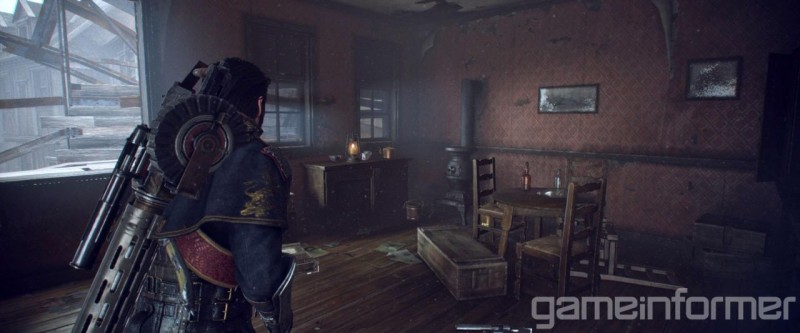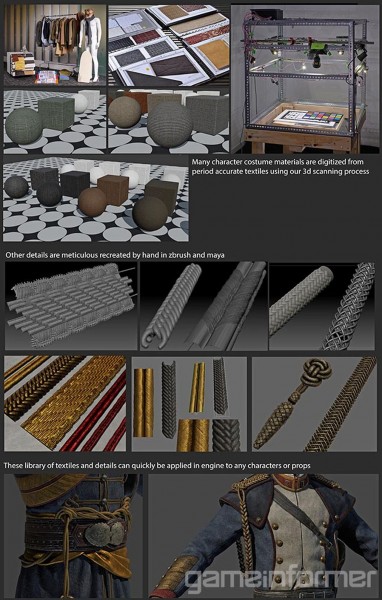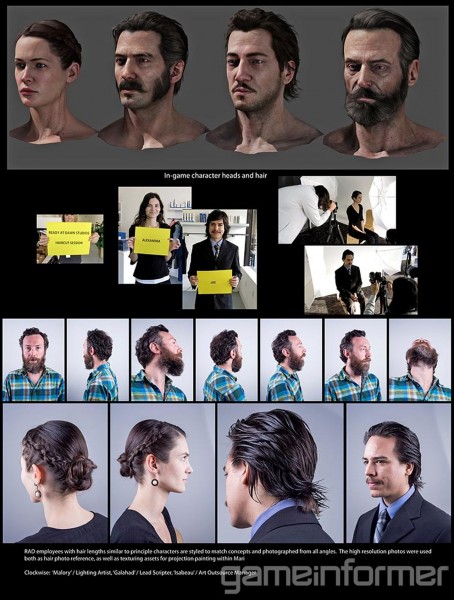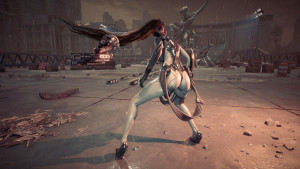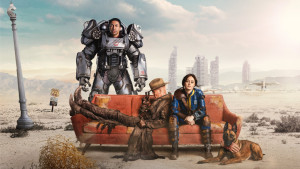Please support Game Informer. Print magazine subscriptions are less than $2 per issue
The Next-Gen Tech Of The Order: 1886

Graphical improvements in video games have become less dramatic with each new console generation. Games on the Xbox One and PlayStation 4 look gorgeous, but it’s challenging to point to specific examples describing why they look better than the 360 and PS3. Game Informer got the chance to see The Order: 1886 in action for our November cover story, and it quickly became the most apparent display of the PlayStation 4’s power we’ve seen so far. Ready At Dawn’s alternate take on 19th century London is packed with period-accurate wardrobes and highly expressive characters. We spoke with Ready At Dawn about using the PS4’s technology to create a richly detailed, yet lived-in, world.
We started off the conversation about the PlayStation 4’s formidable hardware with art director Nathan Phail-Liff and tech director Garrett Foster.
“The power speaks [for] itself,” Foster says when asked how Ready At Dawn is able to create such a detailed world. “It’s more powerful than most computers on the planet, and it is the most powerful console on the planet. With that, they allow us bare-to-the-metal access [hardware free of pre-loaded software]. We can do whatever we want to. Even the head of ATI a couple months ago came out and said graphics are getting held back by a software layer that PC developers just can’t take advantage of. What we’re able to do is take it to a new level where we can literally take advantage of every cycle and try to make it as best it can be.”
Ready At Dawn has created its own engine to take advantage of the PlayStation 4’s impressive tech. But improved technology is useless without artists capable of taking advantage of it.
Take a look at the screenshot above and observe how the light plays off the wallpaper, cast iron stone, and other in-game objects
“From an art standpoint, with every generational shift you can do more of everything,” Phail-Liff says. “You can nickel and dime – ‘Oh we have this many more polygons and significant more textures.’ There’s this standard order of magnitude growth on the whole detail of level. But some of the standout things for us, going from the PS3 generation to the PS4, are the shading and internal models. That’s a huge thing. On PS3 there’s a lot more approximations of how objects look and respond to light. With the PS4 we can implement a much more reality-based, advanced shading model. So metals aren’t just shiny, they actually look like the physical samples in the real world. So that’s something that, for getting polygon and texture budgets just makes everything from lighting to physical objects really shine.”
The creators of The Order: 1886 showed off this object shading technique in a brief demonstration. 3D objects are crafted for the game world, then artists detail them with brushes that impose pre-made textures onto them. For example, a rusty fire hydrant may include two different types of metal which each react differently to lighting. Pre-loaded systems like Ready At Dawn’s shading tools allow the team to save time in the long run.
“The simplest analogy is Photoshop for materials,” says Phail-Liff
Textile scanning is another method Ready At Dawn is employing to save time and create a more immersive world. During our visit the studio showed us a large contraption that allows developers to scan flat, real-world objects into the game. The team scans real samples of aged parchment, wallpaper, and period-accurate clothing into the game. The multiple cameras and light sources allow in-game lighting to play off these textures realistically. These samples can then be pasted onto objects and the environment.
“It adds a level of realism that’s just not possible otherwise,” Foster says. “There are imperfections in the world that you never think of. When you see cloth, there’s tons of little strand imperfections that are hard to mimic.”
Foster adds that many artists painstakingly weather and distress game objects to make them look more realistic. The textile scanner allows Ready At Dawn to simply scan the genuine article into the game, which saves artists’ time and creates a higher level of fidelity.
The process of zapping real textiles into the game saves time, but Ready At Dawn is still free to alter them if a specific pattern or look doesn’t perfectly fit the requirements. The in-game result is stunning. Everything down to the wood texture of a gun’s stock to the embroidery of a table cloth looks genuine.
“Every process we have that captures something from real life, we have pipeline that lets us alter it, too,” Phail-Liff says. “So we’re never wedded to exactly what we capture. It gives us all these great building blocks that it lets us stylize it, lets us change it, or alter it, but it saves a lot of time.”
Foster thinks of this method of transposing real-world textures into games could work well even for more fantastical games.
“I think if we were to make something stylized again, let’s say we were to make another Daxter, something in that ilk, something that’s that stylized, I think the process would be the same,” Foster says. “We would still start with a realistic base and mutate it towards our goals, because it gives you such a strong foundation to move stuff from and it’s believable. It’s immediately believable.”
“Not sure there any Ottsels available in this game,” Phail-Liff says.
“We can take a ferret and a weasel, I guess that’s what it is, man. Mix those two together – mo-cap ‘em,” Foster says, laughing.
Speaking of motion capture, Ready At Dawn has put a lot of effort into the character models of The Order’s knights. The team says there are more joints in one knight’s face than in all of Uncharted’s Nathan Drake, another indicator of the PS4’s prowess.
Take a look at the image above for a good sense of the range of expression these characters are capable of thanks to the increased number of joints. The improved facial capabilities allow for actor’s performances to make it into the game without losing much from the performance.
Ready At Dawn is taking characters a step further by paying close attention to their unique hairstyles and facial hair. Team members with hair lengths similar to the game characters were done up to look like the knights. These custom ‘dos were then carefully lit and photographed as reference for the game models. Given Galahad’s majestic mustache, it looks like the effort is paying off.
All of Ready At Dawn’s in-house tech is an impressive demonstration of the PS4’s capabilities, but as Uncle Ben said to Peter Parker, “With great power comes great responsibility.” With that in mind, Ready At Dawn is being careful not to simply add in impressive technology for the sake of doing so.
“As the developers our responsibility is to keep in mind the best interests of the game and making sure that we’re not gratuitously implementing technology as a digital ego trip just to show you can. It should have a purpose in terms of the emotional impact on the player, the enjoyment, [and] the experience,” Phail-Liff says.
“That’s something we actually have almost no interest in,” Foster says. “We’re not a tech house; we’re a gaming house. We’re game developers. Every piece of technology that’s here, no matter how crazy outlandish it is, has a reason that was directly driven by the game.”
The dawn of a new console generation is an exciting time, but games are the true incentive for making the leap. Sony has visually impressive first-party titles like Knack and Killzone: Shadow Fall ready at launch, but The Order: 1886 is the first next-gen title we’ve seen that truly looks like it couldn’t be pulled off on modern machines. The level of authenticity Ready At Dawn is injecting into its version of London has us excited to dive into The Order: 1886’s world next year.
